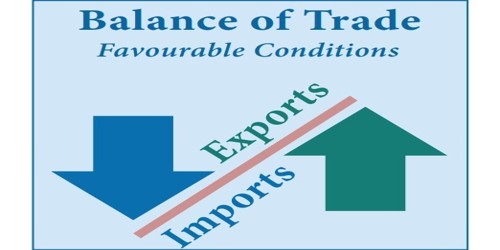
Retirement savings are a critical component of financial planning, and understanding the impact of inflation is essential for anyone looking to secure their future. Inflation can erode purchasing power and significantly affect retirement funds if not properly accounted for.
Understanding Inflation
What Is Inflation?
Inflation is defined as the rate at which the general level of prices for goods and services rises, leading to a decrease in the purchasing power of money. Essentially, as inflation increases, each unit of currency buys fewer goods and services. For example, if the inflation rate is 2 percent, a product that costs 100 dollars today will cost 102 dollars one year from now.
Types of Inflation
Inflation can be categorized into several types, each with distinct causes and effects:
Demand-Pull Inflation: This occurs when demand for goods and services exceeds supply. Economic growth often drives demand-pull inflation, leading to price increases.
Cost-Push Inflation: This type arises when the costs of production increase, causing businesses to raise prices to maintain profit margins. Factors like wage increases or rising raw material costs can lead to cost-push inflation.
Built-In Inflation: This occurs when businesses increase prices in anticipation of rising costs, often resulting in a self-perpetuating cycle of wage and price increases.
The Importance of Understanding Inflation for Retirement Planning
Inflation poses a significant risk to retirement savings. Many retirees underestimate the effect of rising prices on their living expenses. Not accounting for inflation can lead to insufficient funds, making it challenging to maintain a desired standard of living.
The Effects of Inflation on Retirement Savings

Erosion of Purchasing Power
One of the most profound effects of inflation is the erosion of purchasing power. As prices rise, the value of money diminishes over time. For instance, if you have 100 dollars today, in twenty years, assuming an average annual inflation rate of 3 percent, that same amount will only have the purchasing power of approximately 54 dollars.
Increased Retirement Costs
Inflation can lead to higher costs in essential areas such as healthcare, housing, and everyday expenses. As retirees live longer, they may face increased medical costs, which tend to rise faster than general inflation. This reality makes it crucial to plan for these potential increases adequately.
Long-Term Financial Planning Challenges
Inflation affects various aspects of long-term financial planning. Key areas include:
Retirement Age: If inflation rises faster than expected, you may need to adjust your retirement age or alter your savings strategy to ensure sufficient funds.
Withdrawal Rates: To prevent depleting your savings, many retirees aim for withdrawal rates between 4 and 5 percent annually. However, inflation can significantly reduce the effectiveness of this strategy if it is not adequately accounted for.
Investment Strategy: The risk of inflation highlights the importance of a diversified investment strategy that can potentially outpace inflation over the long term.
How to Protect Your Retirement Savings from Inflation
Given the impact of inflation on retirement savings, it is essential to adopt strategies that mitigate this risk. Below are effective approaches to safeguard your retirement funds against inflation:
1. Invest in Assets That Outpace Inflation
Investing in assets with the potential for growth can help protect your purchasing power. Consider the following options:
Stocks: Historically, equities have provided substantial long-term returns that can outpace inflation. While volatile in the short term, over the long haul, stocks tend to grow in value, allowing investors to maintain purchasing power.
Real Estate: Real estate often appreciates over time, and rental income can increase with inflation. Investing in rental properties or real estate investment trusts (REITs) can provide a hedge against inflation.
Commodities: Physical assets, like precious metals (gold and silver), tend to hold value during inflationary periods. Commodities can serve as a store of value when currency loses purchasing power.
Inflation-Protected Securities: Government bonds such as Treasury Inflation-Protected Securities (TIPS) can help safeguard against inflation as their principal value increases with inflation.
2. Diversify Your Investment Portfolio
A well-diversified portfolio helps spread risk and increase potential growth. Include a mix of asset classes (stocks, bonds, real estate, and alternative investments) to balance your investment strategy.
3. Consider Inflation in Your Retirement Planning Assumptions
When developing your retirement plan, it's crucial to account for inflation in your calculations:
Estimate Future Expenses: Use historical inflation rates to project your future living expenses. This will provide a more accurate view of your retirement needs.
Adjust Savings Goals: Review your savings targets regularly and adjust them to reflect changing inflation expectations.
4. Increase Your Savings Rate
If possible, gradually increase your savings rate to compensate for inflation. Even small increases can add up over time, helping ensure you have enough to meet your future needs.
5. Utilize Tax-Advantaged Retirement Accounts
Take advantage of tax-advantaged accounts like 401(k)s and IRAs, where your investments can grow tax-free or tax-deferred. These accounts can help your savings grow faster, providing a cushion against inflation.
6. Plan for Healthcare Costs
Healthcare costs tend to rise faster than general inflation. Make sure to include potential healthcare expenses in your retirement savings plan:
Health Savings Accounts (HSAs): If you have a high-deductible health plan, consider contributing to an HSA, which offers tax advantages and can be used for qualified medical expenses.
Long-Term Care Insurance: Evaluate the need for long-term care insurance, which can protect your assets from significant healthcare-related costs in retirement.
7. Review and Adjust Your Portfolio Regularly
Regularly review your investment portfolio to ensure it aligns with your retirement goals and inflation expectations. Rebalance your investments as needed to maintain your desired asset allocation.
Common Mistakes to Avoid When Planning for Inflation

While planning for inflation is vital, many individuals make common mistakes that can jeopardize their retirement savings. Here are some pitfalls to avoid:
1. Underestimating Inflation Rates
Many retirees underestimate future inflation rates or fail to consider historical trends. Always factor in potential inflation when projecting your retirement needs.
2. Ignoring Investment Risks
While aiming for growth, it is essential to remain aware of the risks involved in various investments. Always consider your risk tolerance and investment horizon when building your portfolio.
3. Failing to Account for Rising Healthcare Costs
Healthcare expenses can significantly increase in retirement. Be sure to incorporate projected medical costs into your retirement planning to avoid unexpected shortfalls.
4. Not Reviewing Plans Regularly
Circumstances change over time, and so do financial needs. Commit to reviewing your retirement plan regularly to account for changes in income, expenses, and inflation.
5. Neglecting to Seek Professional Advice
Developing a comprehensive retirement plan can be complex. Consider working with a financial planner who can help you create a personalized retirement strategy that accounts for inflation.
Conclusion
Inflation is a critical factor that can significantly impact your retirement savings and overall financial security. Understanding its implications and incorporating strategies to mitigate its effects are essential steps in ensuring a comfortable retirement.
By investing in assets that can potentially outpace inflation, diversifying your portfolio, and planning for rising costs, you can protect your purchasing power and ensure that your retirement funds last throughout your lifetime. Additionally, staying informed and seeking professional guidance can help you navigate the complexities of retirement planning.
As you prepare for your future, take inflation seriously and make it an integral part of your retirement strategy. With careful planning and proactive measures, you can secure a financially stable and fulfilling retirement.








